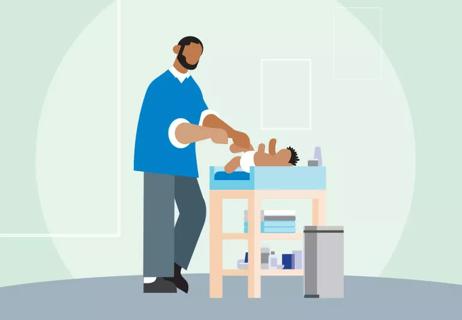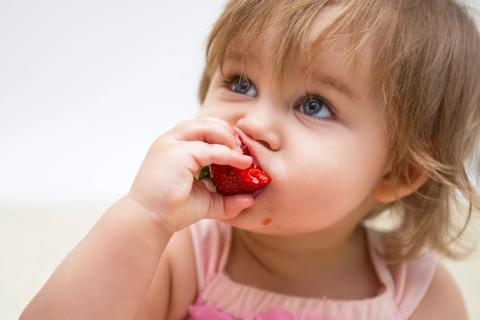Tips for getting to the bottom of the problem

If you have a baby, you know about unpleasant occurrence of diaper rash. While it’s a common problem, even a mild case can upset you — and irritate your little one.
Advertisement
Cleveland Clinic is a non-profit academic medical center. Advertising on our site helps support our mission. We do not endorse non-Cleveland Clinic products or services. Policy
When you’re changing a diaper and find a red, painful-looking bottom, it’s not only important to know how to treat it, but also how to avoid recurrence. Often, this involves basic care adjustments, but sometimes, it can be harder to pinpoint the source of the problem, especially if it’s related to food or skin allergies.
Pediatrician Jacqueline Kaari, DO, explains what to watch for, how to avoid making diaper rash worse and when you should suspect that allergies are involved.
According to the American Academy of Pediatrics, “more than half of all babies between 4 to 15 months of age will develop diaper rash at least once in a two-month period.” So you’re not alone if you and your baby are occasionally struggling with an outbreak.
“It’s a quality-of-life issue for the child who is miserable, and for the parents who want to help but are not getting any sleep,” Dr. Kaari says.
She says to first look for the most common cause of diaper rash, which is a baby wearing a wet or soiled diaper for too long. It’s important to pay attention to a few diapering basics before looking for other causes.
Research suggests that diaper rash is less common with disposable diapers, but what’s more important than the type of diaper is how often you change it.
Advertisement
Before you consider allergies as a culprit, check to see if you are doing the following:
Besides the most obvious, there are several other factors that may leave your baby with a red bottom:
1. Disagreeable diapers or wipes. A certain brand of disposable diaper or baby wipe could irritate the skin.
Tip: “While they may outgrow the irritant, the best thing is to try a different product,” Dr. Kaari says. “The simplest strategy is trial and error — eliminate one variable at a time.” Use water wipes or a soft cloth with water to clean their bottom. If your baby’s bottom is red, try to avoid using regular baby wipes to clean the area. These may cause further irritation.
2. Irritating detergent. The laundry detergent used to wash cloth diapers is sometimes the culprit, but if this is the case, your child is also likely to have a rash elsewhere on the body.
Tip: Use detergents labeled scent/fragrance-free and dye-free to wash your baby’s diapers and clothes. Stick with one brand if you suspect soap is irritating your child’s skin.
3. Harmful heat. Hot, humid weather or overdressing a child for the weather can cause a heat rash in the groin area. However, as with detergent, the rash is likely to also show up elsewhere, particularly on the neck, armpits and elbow creases.
Tip: Of course you want to keep your baby warm enough, but it’s possible to overdo it.
In cold weather, check on your baby and loosen clothing as needed when you’re moving from your car to stores or restaurants and back. In hot weather, a diaper is often enough, but use sunscreen and shade when you’re outside. And bring an outfit for air-conditioned spaces.
4. Unfriendly food. Your child may have a food sensitivity or allergy, but other symptoms besides diaper rash are also likely in this case.
“For instance, a child having an adverse reaction to cow’s milk is likely to also have blood in the stool, hives, swollen lips and/or wheezing,” says Dr. Kaari.
Advertisement
Tip: To prevent food allergies, doctors recommend that children avoid milk before age 1 and eggs before age 2.
Despite all your best efforts, a child can still develop a diaper rash, either gradually or suddenly. If that happens, clean the area gently with soap and a soft cloth. Avoid rubbing and always be sure to pat the area completely dry.
Call your pediatrician if the rash:
“If there’s any question in your mind, bring them in to see their pediatrician,” says Dr. Kaari, adding, “I tell my parents that about anything.”
Advertisement
Learn more about our editorial process.
Advertisement

These simple steps can soothe your baby’s blotchy bottom

It’s likely a short-term sensitivity (not an allergy) to acidic foods

Bleeding is a risk and warrants taking care, but the reward of this lifesaving medication is great

Severe and debilitating headaches can affect the quality of your child’s life

With repeat injections over time, you may be able to slow the development of new wrinkles

Type 2 diabetes isn’t inevitable with these dietary changes

Applying a hot or cold compress can help with pain